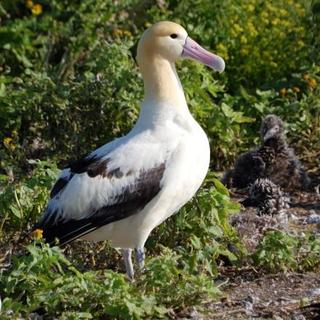Endangered Seabird Taken as Bycatch

Thursday, November 03 2011
Traditionally, it’s bad luck to kill an albatross. That’s especially the case if it’s a short-tailed albatross, since taking the endangered bird as bycatch can result in fishery closures.
According to the National Oceanic and Atmospheric Administration, one of these birds was taken in the hook-and-line groundfish fishery last Tuesday. The bird had come from a breeding colony in Japan, and it was taken west of the Pribilofs. A tag on the albatross showed that the bird was less than two years old.
This is the first report of short-tailed albatross bycatch this year. Two were taken last fall, after twelve years without an incidental take by longliners. If more than four are taken in a set two year period, the Bering Sea Aleutian Islands hook-and-line groundfish fishery is shut down, and an endangered species act consultation is triggered. The current two-year period began this September, so this is the first strike for the fleet.
Right now, the short-tailed albatross population is estimated to be around 3,500 birds, and it’s growing at a rate of 7 percent a year. Kenny Down with the Freezer Longline Coalition says that might be one of the reasons why boats are having more interactions with the seabirds.
“What that means is there are several hundred more birds on the ground every year than the year before,” says Down. “So, avoiding these birds becomes a more difficult issue, and you have to continue to turn your efforts toward doing a better job at avoiding birds altogether.”
Rob Suryan is the leader of the United States Fish and Wildlife Service’s short-tailed albatross endangered species recovery team. He says that it’s possible that the birds could be gravitating toward fishing vessels if they’re struggling to feed themselves.
“There also might be environmental conditions, too, that might be causing more birds to try to obtain food from vessels,” says Suryan.
Right now, longline vessels use dangling streamers to keep seabirds away from their gear. The streamers work kind of like scarecrows, and they frighten the albatrosses away from the hooks on the fishing lines. Suryan more boats are also using weighted lines, which limit bycatch by sinking down into the water faster.
NOAA did not identify the vessel that took the albatross. However, seabird coordinator Kim Rivera did comment that there was a fisheries observer on board the vessel and that the vessel was using streamer lines at the time of the take.



